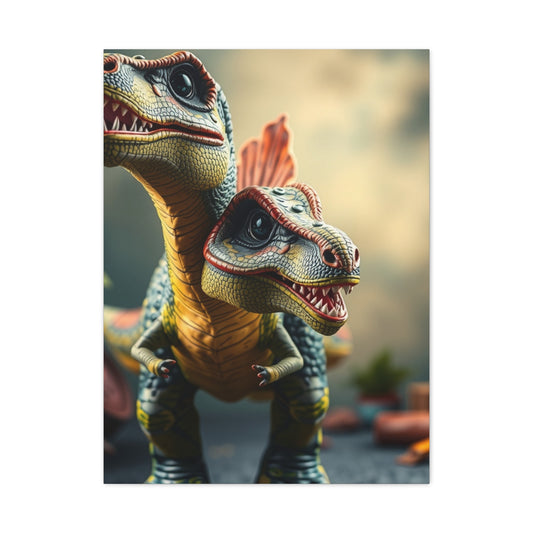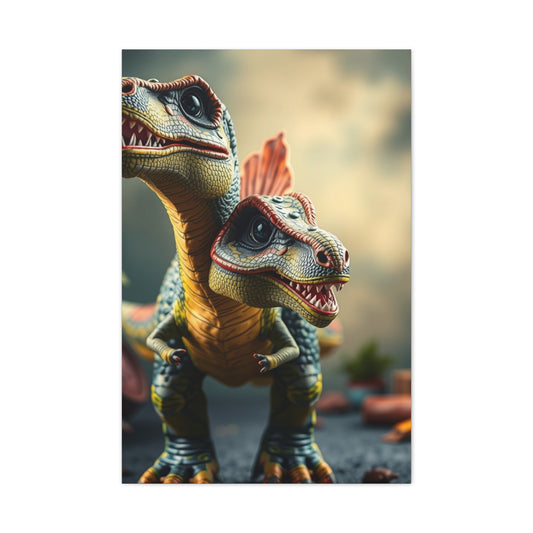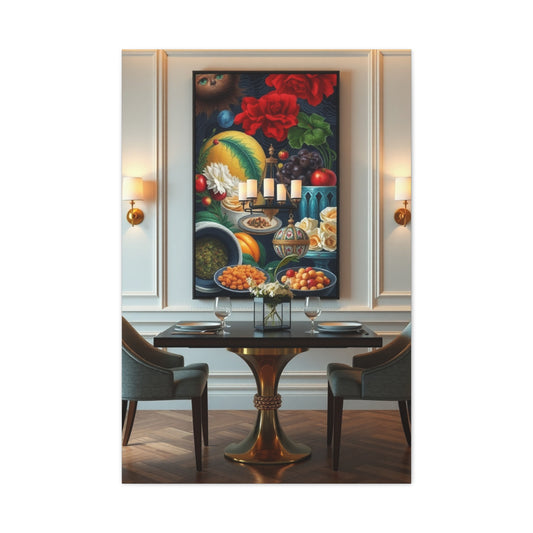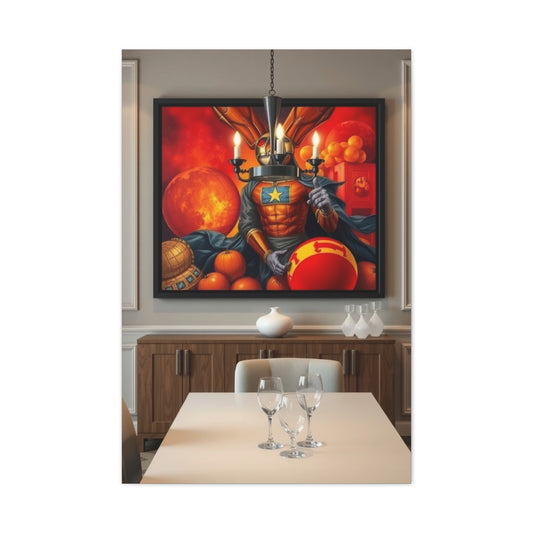Creating a vibrant and imaginative playroom that supports your child’s development goes far beyond choosing cheerful furniture or organizing colorful bins of toys. At the heart of a stimulating environment lies its visual identity—particularly the walls, which serve as expressive canvases for creativity, storytelling, and exploration. Personalized wall art allows parents to continually refresh and reinvent a playroom that evolves with their child, seamlessly blending functionality and flair in a dynamic and engaging space.
Cultivating a Space That Evolves with Every Stage
Children's interests change rapidly. A fascination with dinosaurs may soon be replaced by an obsession with outer space or fairy tales. Instead of reconstructing the entire room, parents can embrace modularity and flexibility by using adaptable wall art. Interchangeable art solutions like peel-and-stick decals, magnetic murals, and framed prints make it possible to switch up decor without expensive or time-consuming renovations.
This type of adaptive design transforms the playroom into a flexible sanctuary that grows with the child. With just a few updates to the wall art, a room can transition from a preschool fantasyland to an early learner’s workshop filled with maps, alphabets, and art-inspired displays.
Visual Storytelling as a Foundation for Playroom Design
Transforming a child's playroom into a captivating, interactive environment starts with visual storytelling. Wall art is more than decoration—it provides a framework for your child's imagination to flourish. Through murals, decals, canvas prints, and framed illustrations, the walls of a playroom become a living storybook that continuously evolves with your child’s interests and developmental milestones.
Children perceive the world primarily through visual stimuli. The shapes, colors, and characters that surround them help forge cognitive associations, emotional understanding, and early learning habits. A well-chosen mural of an enchanted forest, for example, isn’t just a pretty picture—it becomes the stage for daily adventures. Whether your child pretends to be a brave explorer, a forest protector, or a curious animal, the imagery supports open-ended play that nurtures storytelling skills and builds confidence.
Visual storytelling also introduces thematic learning. A playroom wall featuring the solar system can open doors to discussions about planets, stars, and space travel. Similarly, an underwater scene might inspire curiosity about marine biology and ocean conservation. This integration of narrative and learning brings dual functionality to the space—merging education with creativity in a seamless and stimulating way.
The key to designing a story-rich playroom is consistency. When each piece of wall art connects to a broader theme or storyline, the space feels immersive and harmonious. This cohesion makes the environment feel intentional and thoughtfully curated, increasing a child’s sense of security and emotional attachment to the room.
Encouraging Interactive Exploration Through Themed Art
Themed wall art invites children to dive headfirst into hands-on exploration. Unlike passive design elements, thematic art engages their sense of wonder and initiates active participation in play. A pirate-themed mural could inspire a treasure hunt game, while a world map print might become the starting point for pretending to travel across continents.
These types of interactions are essential to childhood development. The more a child can relate to and expand upon what they see, the more effective the space becomes as a tool for growth. Visual storytelling through wall art supports different types of learning styles—from visual learners who are drawn to detailed illustrations to kinesthetic learners who respond to action-based play inspired by imagery.
Encourage your child to contribute to the narrative by letting them choose a theme or suggest ideas for new artwork. When children have agency in their environment, they feel a greater sense of belonging. They also take pride in their space, fostering independence and responsibility.
Seasonal or rotating themes add an additional layer of engagement. For example, a spring garden theme might focus on flowers, bugs, and rainbows, while autumn could introduce harvest scenes, woodland creatures, and falling leaves. These subtle changes refresh the environment and keep the story alive all year long.
Emotional and Social Development Through Visual Narratives
One of the more understated but powerful benefits of using wall art to tell stories is its impact on emotional and social development. When children are exposed to stories—visual or verbal—they learn to empathize, identify with characters, and express their feelings in creative ways.
Wall art featuring expressive characters or emotional journeys helps children understand abstract concepts such as kindness, perseverance, or bravery. A mural showing a character overcoming obstacles or exploring new worlds may become a mirror for your child’s own emotional challenges or growth. This metaphorical reflection helps children articulate their inner world and build resilience.
Furthermore, visual storytelling invites social interaction. Siblings, friends, and even caregivers can join in the play, creating shared narratives that foster cooperation and communication. A single image of a spaceship might lead to a game about building rockets, assigning crew roles, and working together to “land on the moon.” These shared experiences build relational skills and teach children how to work in a team, take turns, and negotiate different perspectives.
In multi-child households, having different themed corners supported by unique wall art gives each child a personal space within a shared room, helping them define identity while promoting mutual respect. By visually honoring diverse interests—one side with construction vehicles, another with fairytale creatures—you create a playroom that celebrates individuality without sacrificing harmony.
Crafting a Cohesive and Evolving Story Environment
As your child grows, so too should the visual narrative of their space. Personal growth and changing interests mean that wall art should be flexible and easy to update. Opt for materials like peel-and-stick decals or modular art systems that allow for easy swapping without damaging walls. This enables parents to evolve the room’s story alongside their child’s intellectual and emotional development.
Rather than treating the playroom as a static design project, view it as a living canvas. When a child graduates from fairy tales to science fiction, the room should reflect that shift. New wall art can incorporate more sophisticated illustrations, motivational messages, or subject-specific themes like history, technology, or world culture.
This evolving narrative helps children understand that change is natural and welcome. It validates their growing identity and gives them tools to express their maturity through aesthetics. Moreover, it maintains their engagement in the space, ensuring that the playroom remains relevant and inspiring year after year.
By building a visually immersive environment that evolves in sync with your child’s growth, you create more than just a functional room—you craft a world of wonder, learning, and self-expression. Visual storytelling through personalized wall art becomes the heartbeat of the playroom, transforming everyday play into lifelong memories and developmental milestones.
Embracing Adaptability in Children's Playroom Design
Custom wall art offers one of the most practical and flexible solutions for creating a child’s space that grows with them. As children move through different developmental phases, their cognitive, emotional, and aesthetic preferences evolve rapidly. A once-beloved cartoon theme might lose its appeal within a year, but the foundational design of the room doesn’t need to change with every shift in interest. Personalized wall decor allows you to build a timeless, versatile space by using adaptable visuals that can be easily updated without a complete renovation.
Starting with a neutral or soft-toned base palette is the key to long-term success. Pale grays, soft taupes, or off-whites serve as blank canvases that allow colorful or detailed wall art to take center stage. These foundational tones ensure that future design adjustments are seamless, eliminating the need to repaint or redecorate extensively. A room with a neutral background can easily shift from a jungle-themed environment for toddlers to a science lab-inspired setup for older children—all by replacing a few art pieces.
Moreover, custom wall art makes it possible to personalize every corner of the room to your child's current interests, educational needs, and creative explorations. Rather than static, framed prints, explore removable wall decals, modular magnetic boards, or fabric posters that can be rotated seasonally. This built-in flexibility not only supports creative expression but also nurtures your child’s developing sense of autonomy.
Seasonal and Thematic Rotation: Reinventing the Room All Year
One of the most engaging ways to maximize the versatility of custom wall art is by implementing a rotating theme schedule. Introducing seasonal decor is a simple and enriching method to stimulate curiosity and encourage learning. In spring, wall art might feature botanical illustrations, blossoming trees, and newborn animals. Summer can bring in underwater worlds, beach scenes, or vibrant tropical wildlife. Autumn could welcome educational art focused on harvest, weather cycles, or forest animals. Winter might spotlight snowflakes, hibernation themes, or global holidays.
This gentle rotation not only keeps the room visually fresh, but it also teaches children about the passage of time, environmental changes, and cultural rhythms. Wall art becomes a storytelling device, prompting questions and conversations. What causes leaves to change color? Why do animals hibernate? This active engagement transforms the room into an informal learning environment that nurtures lifelong curiosity.
Thematic cycles can also align with academic milestones or personal growth. For instance, at the beginning of the school year, you might add motivational wall quotes or study-themed artwork. During holiday months, opt for cozy, memory-rich images that reflect family traditions and celebrations. These visual shifts maintain engagement while enriching emotional intelligence and a sense of routine.
Blending Aesthetic Appeal with Educational Purpose
Effective playroom design balances beauty with function. One of the key advantages of personalized wall art is the opportunity to introduce educational content in ways that feel organic and delightful. Instead of conventional charts or textbooks, children encounter knowledge through vibrant visuals that enhance learning without diminishing the room’s aesthetic value.
A multiplication table, for example, doesn’t need to be a drab black-and-white chart—it can be designed in a playful color scheme with animated visuals or themes like planets, animals, or shapes. Similarly, maps can be artistically illustrated to feature topographical textures, landmarks, or language highlights. These forms of artistic education embed learning into daily routines, enhancing retention through familiarity and visual association.
Wall art featuring historical figures, scientific discoveries, or famous artworks introduces young minds to inspiring concepts while also creating a sophisticated visual atmosphere. Portraits of figures like Leonardo da Vinci, Marie Curie, or Neil Armstrong can serve dual roles: as decorative icons and as catalysts for inquiry and admiration. Including subtle definitions, quotes, or timelines below these portraits can offer an easy-to-absorb framework for future learning.
The integration of art and academics makes the space not only enriching but dynamic. Learning becomes multi-sensory and self-directed. Children absorb facts, stories, and values from their surroundings effortlessly, associating discovery with joy.
Encouraging Ownership Through Interactive Decor
An essential part of a child-friendly space is encouraging independence and ownership. Custom wall art can be designed to include interactive components, allowing children to become collaborators in shaping their environment. This active involvement cultivates a deeper connection to the space and instills early lessons in responsibility, self-expression, and decision-making.
Tactile wall decor—such as magnet boards, chalk-friendly murals, or Velcro-based illustration kits—can turn art into an experience. Children can rearrange magnetic animals, planets, or shapes, crafting their own scenes and stories daily. This not only supports imagination but helps develop fine motor skills and sequencing abilities.
Personalization adds another layer of emotional impact. Wall art that includes your child’s name, birth month, favorite animal, or motivational affirmation builds confidence and familiarity. Simple messages like “You Are Capable” or “Keep Exploring” placed alongside engaging visuals foster a growth mindset. These affirmations, when repeated through exposure, become internal mantras that support emotional wellness and self-esteem.
Letting children help select the themes, colors, or placement of new wall art encourages dialogue and collaboration. Whether it’s choosing a marine theme over a space one, or placing their hand-painted artwork next to professional prints, this process validates their preferences and creativity.
Ultimately, the beauty of versatile wall art lies in its capacity to transform, inspire, and educate while maintaining visual harmony. From rotating themes and integrated learning to hands-on interaction and evolving aesthetics, the right wall decor turns a room into a canvas for both play and possibility—ensuring your child’s space grows just as organically and creatively as they do.
Encouraging Active Participation in the Design Process
One of the most fulfilling aspects of designing a playroom is the opportunity it offers for collaboration. As children develop their tastes, inviting them to contribute to the design process can be deeply empowering. Letting your child choose their wall art themes, favorite colors, or even contribute handmade drawings fosters a strong connection between them and their space.
This involvement nurtures decision-making skills and creative autonomy. Whether they prefer ocean life, medieval knights, or world travel, validating their preferences strengthens their confidence. When children see their opinions reflected in the space around them, they feel seen and valued—an essential ingredient in developing self-worth.
In addition to selecting art, children can take part in placement and layout decisions. Simple questions like “Where should this go?” or “Which color do you like more?” can open doors to meaningful conversations and cultivate a sense of pride. Over time, they begin to understand how aesthetics can influence mood and behavior, lessons that carry into other areas of life.
|
Related Catagories: |
Creative activities like letting your child paint their own canvas, decorate a frame, or help design a custom nameplate wall piece add personalized charm while boosting emotional investment. These artworks become milestones of their growth—visual records of their evolving self-expression.
Moreover, this approach helps establish a sense of ownership over the playroom. When a child feels that the room is truly theirs, they are more likely to care for it, keep it tidy, and utilize it productively. It becomes more than a space to play; it becomes a sanctuary of self, where exploration and self-reflection coexist harmoniously.
Merging Aesthetics with Developmental Support
Designing with your child doesn’t mean compromising visual cohesion. Instead, you’re co-creating a space that respects both design principles and developmental needs. The result is a room that looks beautiful, feels welcoming, and functions as a learning and growing environment.
As your child’s passions evolve, wall art can help guide those interests deeper. A young child fascinated with bugs might start with cartoon insects and eventually progress to scientific illustrations or environmental posters. The walls, ever evolving, become part of the child’s journey of discovery.
Personalized wall art also acts as a behavioral tool. Visual reminders like chore charts, emotion wheels, or gratitude boards not only serve functional purposes but also reinforce positive habits and mindfulness practices in an accessible format.
Finally, rotating art is an excellent opportunity to reinforce storytelling and memory-making. Turn each wall refresh into a celebration of new learning or a special moment—perhaps a summer adventure, a new school year, or the acquisition of a new hobby. In this way, wall art becomes not just a static piece of design, but a living, evolving extension of your child’s life and experiences.
Fostering Learning Through Playful Imagery
Educational wall art is an exceptional tool for blending functionality and aesthetics in a child’s playroom. Far from being limited to charts and diagrams, today’s educational decor merges vivid design with developmental purpose, transforming a simple space into an immersive learning environment. When implemented thoughtfully, these visuals become catalysts for organic learning, without the need for structured instruction.
A colorful alphabet mural is an excellent starting point. Not only does it assist with letter recognition, but it can also be designed in a playful, dynamic way that captures attention. Letters might be paired with animals or everyday objects, allowing children to make connections between symbols and real-world items. This helps improve both literacy and cognitive association skills.
Another engaging option is a set of bilingual word charts. Featuring basic vocabulary in two languages—such as English and Spanish, or French and English—these visuals foster early language development and introduce cultural diversity at a young age. The repeated exposure through daily interaction helps children absorb vocabulary effortlessly, laying a foundation for multilingual capabilities.
Lifecycle illustrations are another excellent addition to any playroom wall. From the metamorphosis of a butterfly to the growth stages of a plant, these images provide visual explanations of scientific concepts. Children are naturally curious about how the world works, and when they see these processes displayed creatively on the wall, it encourages questioning and exploration. Pairing the artwork with real-world activities—like planting a seed in a nearby pot—further enhances the educational value.
Visual clocks that teach time-telling are also ideal. With colorful numbers and labeled hour and minute hands, these clocks offer a gentle introduction to time management and mathematics. As children begin to associate times with their daily routines—such as “lunchtime at 12” or “reading time at 4”—the visual aid becomes both educational and practical.
Geography-inspired decor, such as illustrated world maps, introduces children to countries, continents, animals of the world, and famous landmarks. The map can evolve from a playful representation to a more detailed political or physical map as the child grows. This gradual evolution allows for continuous learning, curiosity about the world, and an expanding sense of global awareness.
Even thematic wall art like numbers or shapes can be designed with unique flair. A number wall featuring cartoon characters, textures, or interactive elements like touch-and-feel components encourages tactile exploration along with numerical understanding. Educational art need not feel institutional—it should be part of the room’s charm, woven into the fabric of the space to inspire subtle, sustained engagement.
For visual learners, this kind of exposure is invaluable. The constant presence of educational art in their environment allows knowledge to be absorbed passively and recalled naturally. It transforms the playroom into an informal classroom—one where discovery is self-directed and joyful.
Moreover, educational artwork serves as a springboard for parent-child interaction. A map on the wall might prompt a conversation about different countries or cultures. An anatomy poster might inspire a discussion about how the body works. These interactions enrich the parent-child bond while fostering a love of learning.
Empowering Children with Personalized Elements
While general educational themes are vital, personalization takes the emotional and psychological impact of wall art to a deeper level. Incorporating elements that reflect your child’s identity infuses the space with meaning, transforming it from a generic playroom into a sanctuary of self-expression and security.
Personalized wall art can include your child’s name, age, birthday, or a custom monogram. These seemingly simple details create a profound sense of ownership. When a child sees their name beautifully displayed, it reinforces a feeling of belonging and pride. Their room becomes uniquely theirs—not just a play area, but a personal domain where their individuality is celebrated.
Positive affirmations are another powerful component of personalized art. Phrases like “You are Loved,” “Be Brave,” or “Shine Bright” act as constant, gentle reminders of inner strength, kindness, and self-worth. When displayed regularly, these affirmations shape a child’s internal dialogue, nurturing emotional resilience and confidence. Over time, these messages become internalized mantras that support emotional well-being.
Art that incorporates your child’s interests or aspirations—such as a framed print of a future astronaut’s mission statement, or a ballerina’s dream quote—fosters identity-building. These visuals can act as vision boards, subtly encouraging goal setting and personal growth. The environment becomes not just reflective of who they are, but who they want to become.
Customized growth charts are also excellent additions. These decorative tools serve a dual purpose—helping track physical growth while celebrating milestones along the way. When accompanied by your child’s name and birth date, they become treasured keepsakes that evolve alongside the child.
Family-oriented personalization also has an impact. A wall piece with the family surname, a crest, or a phrase like “In This House We…” followed by shared values fosters a sense of unity. This strengthens the emotional fabric of the home and reminds the child of their roots, instilling a feeling of security and connectedness.
For added creativity, consider integrating artwork created by the child themselves. A framed watercolor, a self-portrait, or even a messy finger-paint masterpiece gives children the thrill of seeing their work valued and displayed. It affirms their capabilities and shows that their voice matters in the shaping of their environment.
Custom wall decals or peg boards that allow interchangeable words or phrases give older children the chance to alter messages themselves. From weekly affirmations to rotating interests, this interactivity reinforces their autonomy and keeps the decor dynamic and relevant.
The color palette of personalized pieces can also reflect emotional intention. Softer pastels may evoke tranquility and safety, while vibrant tones can energize and excite. Matching these with your child’s personality creates harmony between the visual experience and their temperament, supporting emotional regulation and balance.
Ultimately, personalized wall art creates an emotional bridge between the child and their surroundings. It validates their feelings, celebrates their individuality, and fosters self-esteem in a powerful yet gentle manner. These tailored visual elements are more than just pretty accents—they are tools for growth, identity, and emotional nourishment.
Selecting Materials That Are Safe and Long-Lasting
Safety and longevity are foundational when choosing wall art for a child's playroom. Because the space is active and frequently used, materials must be both child-safe and built to last. Ideal options include canvas prints, peel-and-stick vinyl decals, lightweight wooden plaques, and laminated educational posters. These selections are not only durable but also easy to handle and clean—crucial in environments prone to sticky fingers and spontaneous creativity.
Avoid fragile or heavy materials like glass frames or ceramic tiles, especially in areas within a child's reach. These pose unnecessary risks and can easily be replaced by safer alternatives. Soft-edged or frameless designs are also preferable for younger children. For wall pieces that may be handled frequently, opt for surfaces that are resistant to smudges or moisture, enabling you to maintain both hygiene and aesthetic appeal with minimal effort.
Additionally, consider reusable and repositionable wall art. Some modern decals can be removed and reapplied several times without damaging walls or losing their adhesive qualities. This makes them perfect for evolving interests, enabling quick decor changes without renovations.
Making Color a Core Component of the Design
Color has a psychological influence on children’s mood and behavior. Understanding how different tones can stimulate or calm young minds is essential when designing an engaging and nurturing playroom. Bold hues like coral, sunflower yellow, and cerulean can energize the space, encouraging creativity and active play. On the other hand, cooler tones like seafoam green, lavender, or taupe foster calmness and concentration, making them ideal for reading nooks or quiet zones.
Wall art offers a subtle way to layer these colors without permanently altering the room. A bright alphabet print may provide visual excitement in one corner, while a soft-toned watercolor animal series can soothe in another. This color zoning helps guide children intuitively through different areas and activities.
Using a unified but flexible color palette across various art pieces ensures consistency, allowing for future additions without disrupting the room’s aesthetic harmony. Whether you follow a pastel theme or a vibrant rainbow spectrum, color-driven design enhances visual interest and emotional balance.
|
Related Catagories: |
Designing for Movement, Creativity, and Comfort
A successful playroom is more than just a storage area for toys—it’s a fluid, functional space where children can explore, learn, and express themselves freely. That’s why wall art must complement the room's layout and encourage dynamic interaction, not restrict it.
Avoid crowding the walls with oversized or visually overpowering artwork. Instead, curate select pieces that allow for breathing space and physical movement. Playrooms should invite activity, so positioning artwork above furniture or near specific zones helps structure the space without cluttering it.
Divide the room into themed activity zones, each guided by wall art:
-
Creative Zone: Surround this area with motivational art that speaks to imagination, such as paint splatter prints, famous artist quotes, or collages of crayon doodles. Include chalkboard or whiteboard walls for personal expression.
-
Learning Zone: Use maps, number charts, or illustrations of scientific phenomena to spark curiosity and exploration. These can support both independent discovery and guided educational activities.
-
Quiet Zone: Feature calm landscapes, nature-inspired prints, or gentle animal illustrations in a reading corner or nap nook. These areas benefit from subdued tones and calming imagery.
This functional zoning not only organizes the room but also teaches children spatial awareness and helps regulate their behavior and mood according to the space they’re in.
By thoughtfully integrating safe materials, color theory, and intelligent zoning, you transform a playroom into a multifunctional environment. It becomes a space that supports growth, curiosity, and expression—rooted in the tactile and visual joys of personalized wall art.
Encouraging Creative Expression Through Themed Displays
Children flourish in spaces that nurture their imagination, and themed wall art is a compelling way to spark creativity. Whether you choose a safari filled with wild animals, a whimsical woodland filled with foxes and owls, or a magical kingdom of dragons and castles, themed art allows your child to step into new worlds each day. These designs inspire storytelling, pretend play, and interactive learning that go far beyond static decor.
Themes can align with your child’s evolving passions. One season might feature a prehistoric world of dinosaurs, while the next could explore underwater life. This quarterly rotation keeps the room visually refreshing and prevents boredom. With every thematic change, there’s an opportunity to introduce matching books, activities, puzzles, and crafts that create a cohesive, immersive environment. Over time, these connections between visual themes and hands-on experiences enrich your child’s developmental journey.
Use the walls as an invitation to adventure. A train-themed section might encourage building tracks on the floor; a farm scene could inspire toy animal storytelling. Themed displays build bridges between visual cues and real-life learning, cultivating a space where creativity becomes second nature.
Integrating Cultural and Global Themes
Wall art also has the unique power to broaden a child’s worldview. By integrating cultural diversity and global representation, you’re not just decorating—you’re planting seeds of empathy and curiosity. Illustrations showcasing world landmarks like the Eiffel Tower, the Great Wall of China, or the pyramids of Egypt provide early exposure to geography and global heritage.
Include visuals of people from different ethnic backgrounds, traditional garments, international festivals, or world cuisine to nurture respect for diversity. These representations help children build a mental framework for understanding others, encouraging inclusivity from a young age. In multicultural households, this art can be a gentle introduction to one's own heritage or ancestral homeland, fostering pride and connection.
Multilingual or bilingual wall art is especially valuable for families raising children in more than one language. Charts, labels, or posters in multiple languages enhance vocabulary while reinforcing identity and cultural fluency. This approach also supports cognitive development and linguistic flexibility.
By incorporating global themes, your playroom transforms into a small window to the wider world, cultivating awareness and appreciation for people and places far beyond its walls.
Creating a Reading-Enriched Environment
Reading should be as visually inviting as play. A dedicated reading nook in the playroom encourages quiet time, reflection, and literacy development. To make this space irresistible, decorate it with themed wall art that reflects the wonder of books. Prints featuring beloved characters, scenes from favorite stories, or words like “Read, Dream, Discover” create a positive emotional connection to reading.
Pair these visual prompts with soft seating like floor cushions, bean bags, or a cozy armchair. Add warm lighting—perhaps string lights or a soft-glow lamp—and make books easy to access through open shelves or colorful bins placed at a child's height. These design choices support independence and make reading feel like an adventure rather than a task.
Consider rotating book-themed art or adding seasonal literary inspirations—perhaps poems in spring or snowy story scenes in winter. Over time, children associate this corner not only with comfort but also with exploration and growth.
Wall art in reading zones also fosters early language skills by encouraging recognition of letters, words, and punctuation. Paired with your child’s favorite books, it creates an interactive environment where art and literacy blend seamlessly, empowering young readers with a deep-rooted love for stories.
Adding Whimsy and Magic to the Room
The magic of childhood thrives on wonder and fantasy. Use whimsical wall art to add joy and lightness to the room. Look for mythical creatures, rainbow skies, hot air balloons, or fantastical forests. These dream-like elements encourage children to create stories and adventures in their minds.
Such artwork reminds children—and adults—that their space is one where anything is possible. The goal is to blend reality with imagination, creating a nurturing haven that inspires both play and introspection.
Final Thoughts: Designing with Intention and Joy
Designing a meaningful playroom is an act of love, vision, and creativity. Wall art is more than mere decoration—it is the language through which your child’s world is shaped. By choosing adaptive, safe, and personalized elements, you ensure the space remains engaging and nurturing as your child grows.
From stimulating learning to encouraging daydreams, every wall becomes a chapter in your child’s story. Involve them in the process, reflect their individuality in the design, and you’ll cultivate a space filled with laughter, growth, and inspiration.
With the right blend of imagination and intention, your playroom transforms into a timeless creative sanctuary—one that fuels curiosity and celebrates your child’s ever-unfolding potential.



























